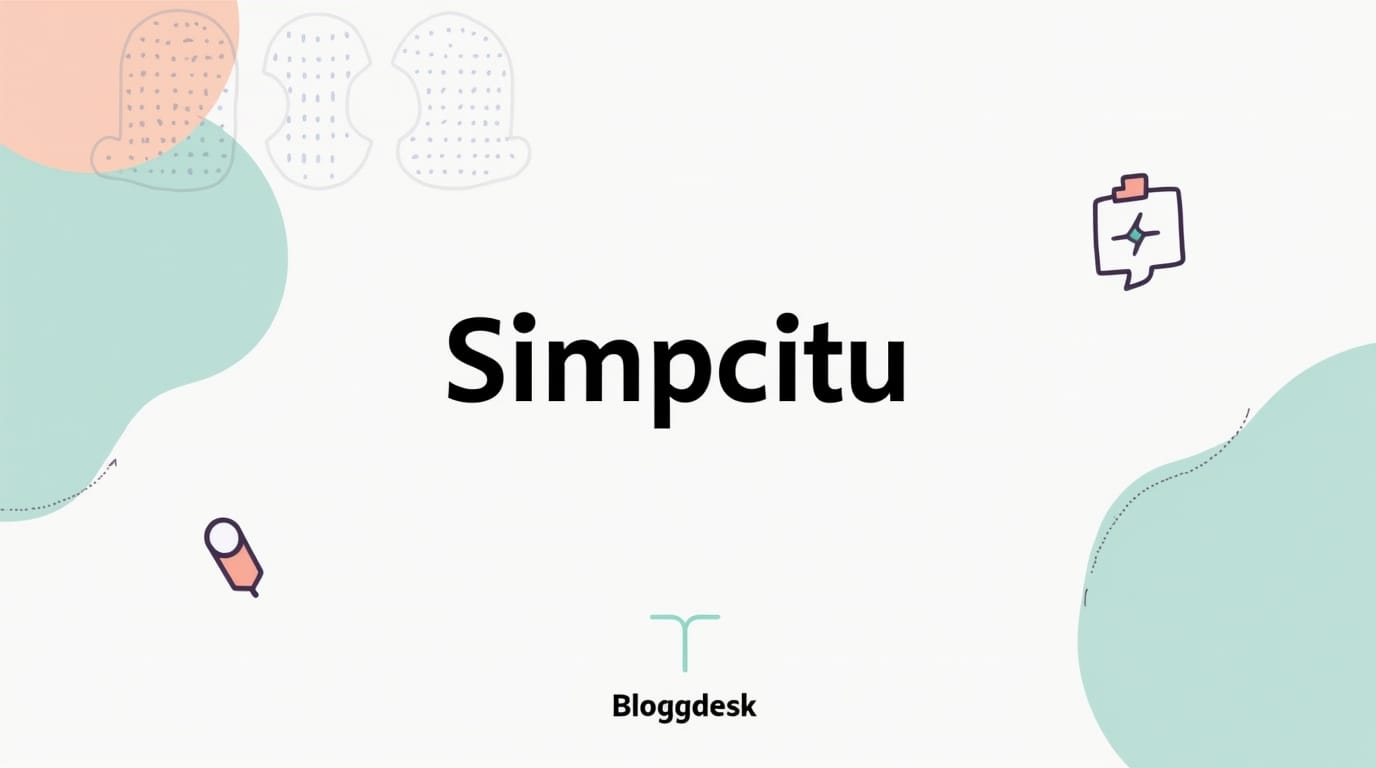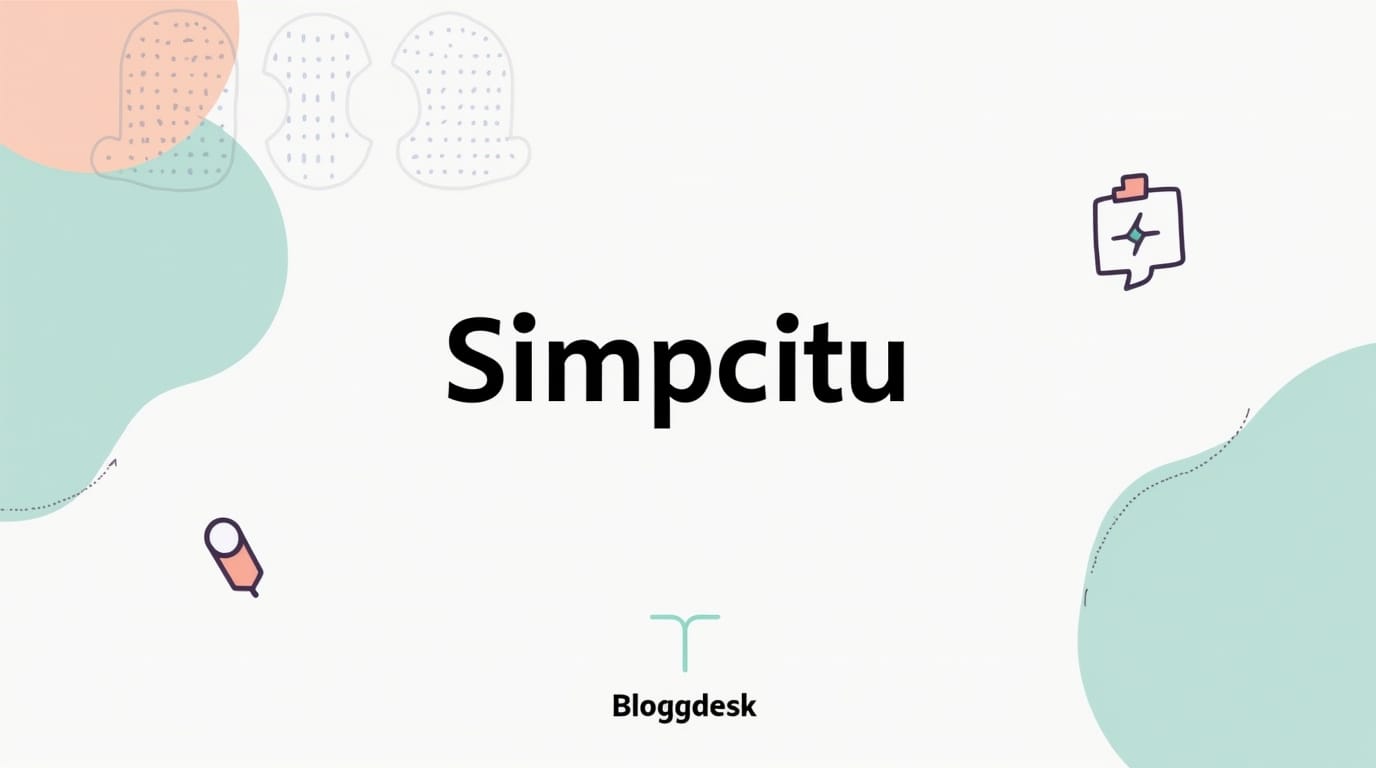Simpcitu: Redefining Clean UI for Modern Users

Simpcitu: A Rebirth of Clean UI for New Age Users
For the last decade or so, the phrase "clean UI" has been interpreted as meaning "minimalism." Involving stark white backgrounds, thin fonts, and a ruthless removal of elements on the screen, it was and continues to be a necessary reaction to the cluttered and overwhelming interfaces of early software. Now that user expectations are undergoing rapid changes, "cleanliness" is undergoing a radical transformation. Today's users want an interface that is simple, not necessarily in appearance but in intellectual constitution. They want interfaces that are respectful, that observe their attention, and that know what the user will do next.
Simpcitu a design philosophy and UI framework is at the forefront of this transformation in redefining what a "clean" interface means in the current digital age. It asserts that cleanliness is not what you remove, but how cleverly you present what is essential. This article thus explores the fundamental concepts of the Simpcitu route and their place when shaping the future of interface design.

The Other Side of Simpcitu: Beyond a Minimalist Aesthetic
Simpcitu is a design philosophy used for digital product and experience creation. The philosophy contends that a clean interface is one with the least amount of elements on the screen. Simpcitu argues that the actual _clean_ UI minimizes the user's cognitive load, that is, the amount of mental effort placed on the user to be able to use it. The basic idea is to transfer the thinking off the user and onto the system itself.
Thus, the design philosophy certainly conjures thoughts of being far away from traditional minimalism. While in those days, clean design thought was subtracting as much as possible from the screen, the Simpcitu thought is about putting the exactly right feature in front of exactly the right user at exactly the right moment in time. It's the difference of walking into an empty room and walking into an impeccably curated room where everything you've needed is right where you expected it at that very moment. Cognitive cleanliness is the ultimate goal of the Simpcitu design philosophy as opposed to simple visual cleanliness.
Basic Principles of Simpcitu's UI Philosophy
Simpcitu is a term built on a set of principles about interface design to make interfaces seem effortlessly intuitive and almost magically responsive to need.
1. Context-Aware and Adaptive Interfaces
In Simpcitu the fundamental belief is that one static interface for all users is cluttered for most of them. Simpcitu, thus, champions a dynamic interface: one that adjusts according to context-who is the user, what is his role, what is he trying to do at that moment. Go back to the complex project management application. A developer using the said app has very different needs from those of a CFO. A static interface would force both of them to simply miss half of the buttons and menus put in front of them, just to mentally filter out options that do not pertain to them.
Inversely, the Simpcitu-Inspired system takes care of adaptation. Developers would see large buttons for "Commit Code" and "View Technical Specs," whereas a CFO looking at exactly the same project would see "View Budget," "Generate Financial Report," and "Approve Expenses." The interface cleansomes by removing options that are not relevant to a particular user in a particular context. This proactive decluttering means that users are never in front of options or tools that they really do not need. This raises the working experience to an incredible extent.
2. Effortless Navigation and "Zero-Click" Information
Reducing the number of steps-users must take- clicking, tapping, or searching-to get what they want is the main goal of Simpcitu. "Zero-click" info is one essential aspect of this concept wherein the system will know what its user needs and provide such info before the user even asks for it. This is implemented by tracking patterns of the user and looking for contextual initiators.
A typical scenario would be that every morning a sales manager would log into their CRM stand to check the weekly sales figures of the team. With a traditional UI, that person would have to work through the menu items: Dashboard > Reports > Sales Reports > Team Performance > This Week. A system designed after the Simpcitu could identify that this is happening every day. By the time the user logs in, the system would already display a summary card of the team's weekly sales figures on the dashboard's home screen. That is zero clicks from the user's end, making the whole process feel effortless and saving time.
3. Calm Technology
In this loud world of digital noise, Simpcitu stands for "Calm Technologies." It means the software is a helpful servant that stays unobtrusive rather than a demanding master vying for our attention. So, it must apply well for notifications, alerts, and interruptions.
Instead of alerting the user on every little event, a system based on Simpcitu principles would enter these alerts in several bundles. User might receive non-urgent notifications' digest once or twice a day, whereas truly time-critical alerts would allow only on immediate notification. This will respect the user's focus and reduce anxiety while enhancing their curb with technology. So, the user interface should foster a calm and focused workspace rather than an environment filled with distraction.
Frequently Asked Questions
Is Simpcitu a specific app or something developers can use?
Simpcitu is best understood as a UI framework and design system. It provides a set of principles, guidelines, and reusable components that designers and developers can use to build their own applications, ensuring they align with this modern, intelligent approach to clean UI.
Does a "clean UI" built with Simpcitu lack features?
Not at all, and this is a critical distinction. A Simpcitu interface can be incredibly powerful and feature-rich. The "cleanliness" comes from intelligently managing that complexity—presenting relevant features when needed and tucking away non-essential ones—rather than from removing functionality altogether.
How is this different from standard UX best practices?
While it is built upon decades of established UX research, Simpcitu is an opinionated evolution of those practices. It places a much stronger and more central emphasis on proactive assistance and context-aware adaptation. While standard UX might ask "how can we make this easier to find?", Simpcitu asks "how can we eliminate the need for the user to find it at all?".
Conclusion
The standard for what makes a user interface "clean" is clearly evolving. The minimalist aesthetic of the past, while important, is no longer sufficient to meet the needs of modern users. The future of UI design lies in a deeper, more intelligent form of simplicity. By championing principles of context-aware adaptation, effortless navigation, and calm technology, Simpcitu is at the vanguard of this movement. It is helping to build a new generation of digital experiences that are not just visually uncluttered, but are also intuitive, predictive, and profoundly respectful of the user's time and focus. This is the new definition of clean.